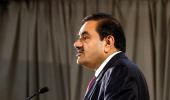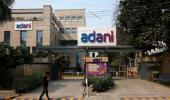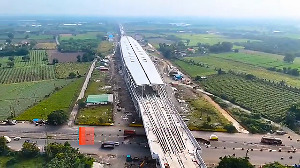'About $8.5 billion in free cash, about $3 billion as annual debt refinancing, and $3 billion-4 billion in fresh borrowing. An additional $1.6 billion-1.8 billion will come from development profits in 2025-26.'
i.

The Adani group intends to fund its $20 billion annual capital expenditure (capex) primarily through internal accruals and debt, according to top executives in the conglomerate.
The Ahmedabad-based group is also planning to bid for electricity-distribution companies in Uttar Pradesh to expand its network in power transmission and distribution as part of its broader strategy to invest in infrastructure.
In an exclusive interaction, top officials led by Sagar Adani, executive director, Adani Green Energy, and member of the Adani family, the group promoters, detailed the funding strategy: About $8.5 billion in free cash, about $3 billion as annual debt refinancing, and $3 billion-4 billion in fresh borrowing.
An additional $1.6 billion-1.8 billion will come from development profits in 2025-26.
"We don't require equity funding," Adani said.
"We have $8 billion-9 billion in cash every year."
While initial public offerings may continue for portfolio-level restructuring through the family office, Adani said these moves were not about raising capital for operating companies.
Adani Enterprises, for instance, raised $500 million through qualified institutional placement (QIP) last year and sold its stake in Adani Wilmar for $1.6 billion, creating a war chest of $2 billion, of which $300 million remains slotted for airport growth.
The group, Adani said, is ramping up its capex plans, targeting up to $20 billion in investment annually, primarily in infrastructure sectors vital to India's economic backbone.
Group Chief Financial Officer Jugeshinder "Robbie" Singh said: "Capex in the group will be in the range $15 billion-20 billion annually for the next six years, and we are aiming to be closer to $20 billion in FY26," adding that "85 per cent of the group's investment was concentrated in core infrastructure".
Utilities and energy will account for 55-58 per cent of capex while transport and logistics -- including airports, ports, and roads -- will take up another 20-30 per cent.
Adani reaffirmed the group's focus on India, calling it the most compelling infrastructure opportunity globally.
"For 30 years, we've believed in the India growth story," Adani said.
"We've built an ecosystem that allows us to deploy tens of billions of dollars in essential assets such as power, transport, and logistics -- non-discretionary consumer services that form the backbone of the economy."
Group assets, he said, are largely insulated from market volatility, with long-term contracted cash flows stretching up to 30 years.
"These are almost zero-risk investments generating a return on assets of 16 per cent or more, which consumer companies rarely achieve even over decades."
The group's ability to deliver large-scale infrastructure stems from decades of groundwork, Adani said, pointing to the successful turnaround of Dhamra Port in Odisha in just two and a half years.
He underscored the high entry barriers in infrastructure development, including regulatory clearance, vendor ecosystems, and capital structuring.
"You can't build a 25-year asset with two-year money," Adani said.
"It's fundamentally different from EPC (engineering, procurement and construction) models.
"Infrastructure requires sweat, resilience, and time -- something we've developed over 30 years."
"Infrastructure isn't retail -- you can't replicate it overnight," Adani said.
"But if you have the capability, margins over 25 years can be exceptional. We have that capability."
On mergers & acquisitions (M&A), Singh said they accounted for less than 10 per cent of the group's asset additions over the past six years, despite executing some of India's largest deals, including the acquisition of Ambuja Cement for $10 billion from Holcim.
"We prefer greenfield development. It's capital-efficient and builds real assets, not intangibles," Singh said.
"Only 5-6 per cent of our capex over the cycle will be M&A-driven."
While the group is open to select acquisition -- such as distribution assets in Uttar Pradesh -- Singh said it was not pursuing the assets of Jaiprakash Associates "at least for now".
On participating in potential airport privatisation by the government, Singh said even aggressive bids wouldn't significantly impact group capex.
"These are primarily per-passenger fee-based bids and not large upfront investments," he said.
The group plans to selectively participate in core infrastructure projects led by the government, with strategic acquisitions used to strengthen its logistics and transport portfolio.
Adani cited uninterrupted operations and increased and profitable cargo volumes at Israel's Haifa Port as evidence of the group's resilience.
Feature Presentation: Ashish Narsale/Rediff











